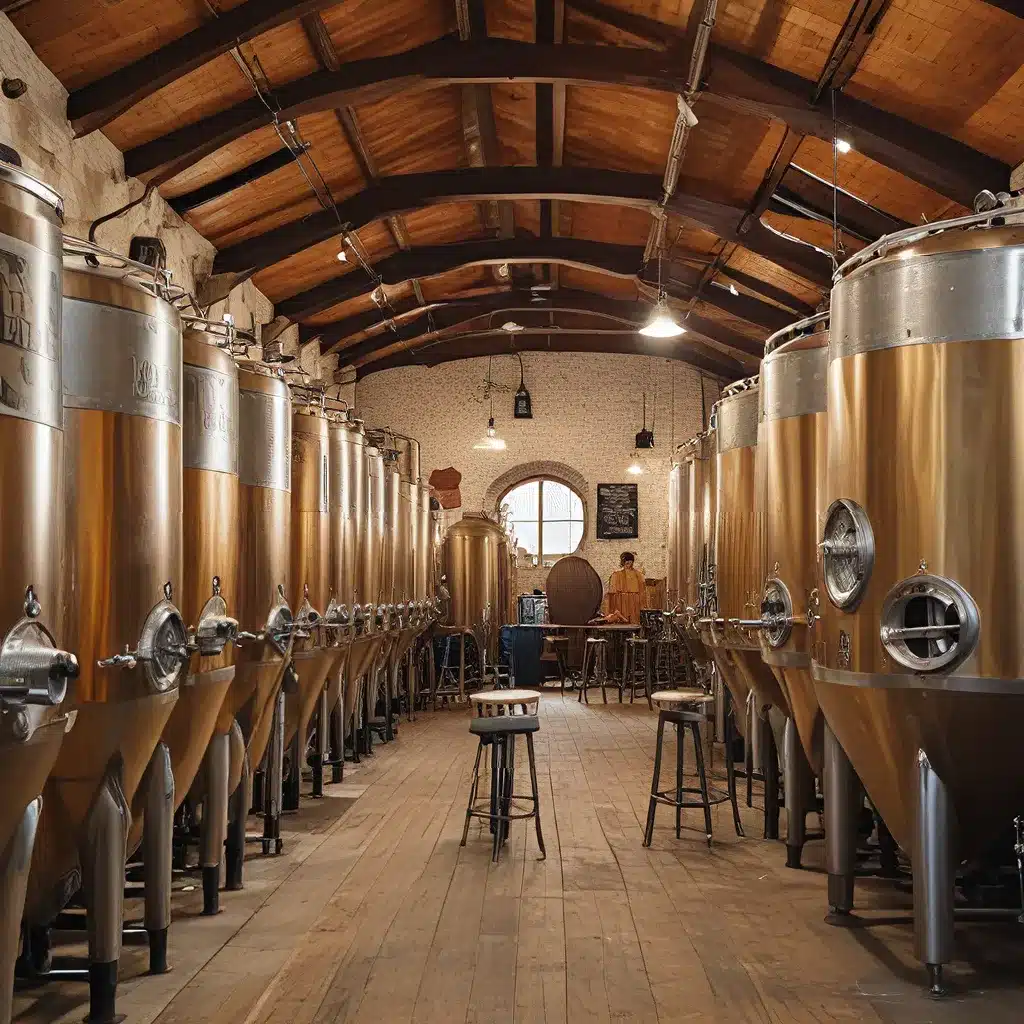
Ah, the ever-evolving world of beer – a liquid tapestry woven with tales of humble beginnings, bold innovations, and the rise of corporate behemoths. As a self-proclaimed beer aficionado, I’ve had the privilege of witnessing this captivating journey firsthand, from sipping craft brews in cozy neighborhood joints to pondering the strategic maneuvers of global beer giants. Join me as we embark on an odyssey through the suds-soaked annals of beer history.
The Cottage Brewers: Where It All Began
Imagine a time when beer wasn’t just a beverage, but a way of life, a communal gathering point for the thirsty masses. Back in the day, before the advent of mass production and multinational conglomerates, beer-making was a true cottage industry. Picture a small, unassuming brewery, nestled in the hills or tucked away in the heart of a bustling town, where the scent of hops and the sound of bubbling fermentation tanks filled the air.
One such pioneering operation was the Ceylon Brewery, established in 1881 in the picturesque Sri Lankan town of Nuwara Eliya. Catering to the British colonial tea plantations, this humble operation brewed beer using the region’s cool climate and natural spring water, a prime example of the cottage-scale brewing that defined the industry’s early days.
The Rise of the Corporate Juggernauts
But as the world spun ever faster, the cozy confines of cottage brewing could no longer keep up with the growing thirst of the masses. Enter the corporate giants, armed with deep pockets, cutting-edge technology, and a relentless drive for expansion.
These behemoths began to gobble up smaller breweries, consolidating power and transforming the industry landscape. Suddenly, the once-quaint Ceylon Brewery found itself under the umbrella of the Carlsberg conglomerate, its history and heritage subsumed by the demands of a global brand.
The Cottage Brewers Strike Back
But the cottage brewers, undeterred by the corporate onslaught, refused to go down without a fight. A new generation of passionate, innovative brewers emerged, determined to reclaim the spirit of the industry’s humble roots. Armed with a deep understanding of their craft and a fervent commitment to quality, these artisanal pioneers began to carve out a niche for themselves.
Craft beer was born, a movement that celebrated the unique flavors and stories of local breweries, each with its own distinct personality. Suddenly, the once-ubiquitous mass-produced lagers found themselves overshadowed by a kaleidoscope of IPAs, stouts, and sours, each one a reflection of the brewer’s vision and the community they served.
The Battle for Market Share
As the craft beer revolution gained momentum, the corporate giants found themselves in a quandary. Their once-dominant market share was slipping away, and they knew they had to adapt or risk becoming relics of a bygone era. But how could they possibly compete with the passion and authenticity of the cottage brewers?
The answer, as it often is in the cutthroat world of business, was to buy them out. The big players began snatching up successful craft breweries, eager to harness the energy and creativity that had eluded them. But in doing so, they faced a delicate balancing act – how to maintain the essence of these beloved brands while integrating them into their own corporate structures.
The Blurring of Boundaries
And so, the lines between cottage brewing and corporate dominance began to blur. The once-clear distinction between the scrappy upstarts and the towering industry titans began to erode. Carlsberg, for instance, found itself grappling with the legacy of the Ceylon Brewery, a once-humble operation that had become a prized asset in its global portfolio.
But as Martyn Cornell’s scathing critique revealed, the corporate giant’s handling of the Ceylon Brewery’s history was less than stellar, riddled with inaccuracies and blatant disregard for the facts. It was a cautionary tale of how even the mightiest of beer empires can stumble when they fail to honor the rich tapestry of their own heritage.
The Future of Beer: A Delicate Balance
So, where does this leave us in the grand scheme of the beer industry’s evolution? As I sip on a crisp, hoppy IPA from my local craft brewery, I can’t help but wonder about the delicate balance that must be struck between the unbridled creativity of the cottage brewers and the sheer muscle of the corporate giants.
Will the big players continue to gobble up the small fry, homogenizing the industry and robbing it of its diversity? Or will they learn to coexist, harnessing the synergies between their resources and the cottage brewers’ passion? Only time will tell, but one thing is certain: the story of beer is far from over.
And as I raise my glass to the The Up & Under Pub, a testament to the enduring allure of the neighborhood watering hole, I can’t help but feel a sense of excitement for what the future holds. After all, the best is yet to come, one sip at a time.

